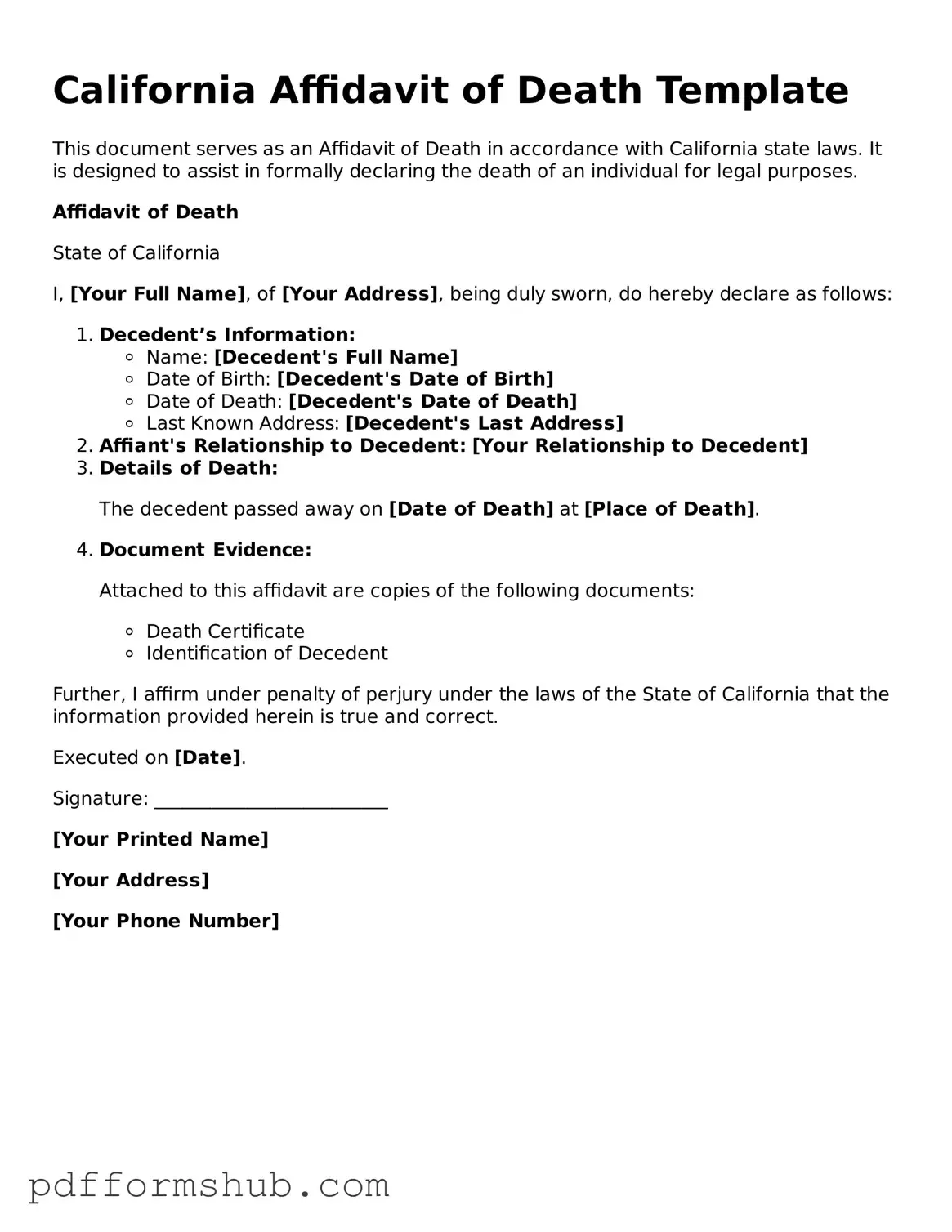The California Affidavit of Death form serves as an important legal document that helps facilitate the transfer of property and assets after an individual has passed away. This form is commonly used to provide official notice of a person's death, allowing heirs or beneficiaries to claim their rights to the deceased's estate. Typically, the affidavit includes essential details such as the deceased's full name, date of birth, date of death, and the relationship of the affiant—usually a family member or close associate—to the deceased. Additionally, the form may require information about any relevant estate planning documents, like wills or trusts, that could affect the distribution of assets. By filing this affidavit, individuals can ensure that the legal process of settling the deceased's affairs proceeds smoothly, minimizing potential disputes among heirs and simplifying the transfer of ownership for real estate and other significant assets. Understanding the purpose and requirements of the California Affidavit of Death form is crucial for anyone involved in estate management or inheritance matters.
